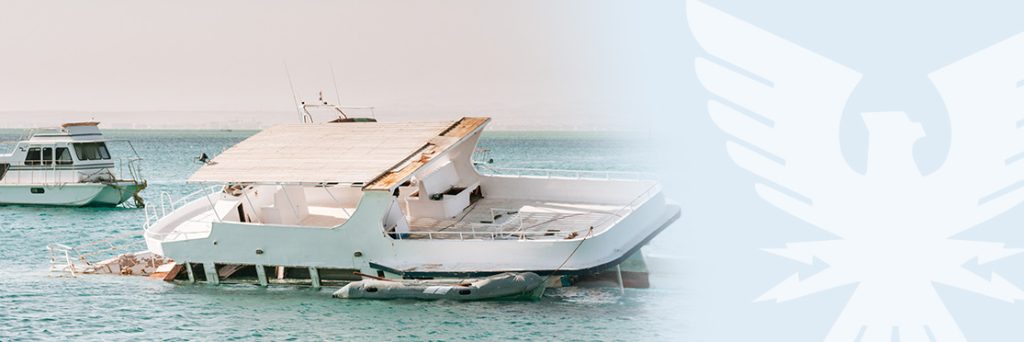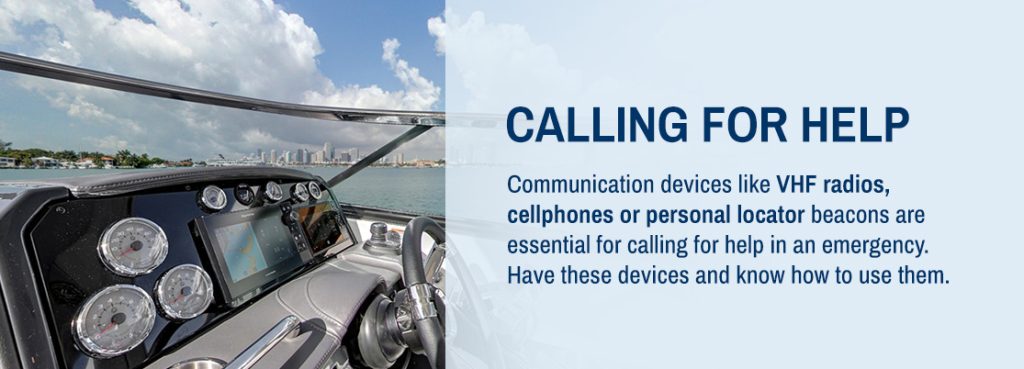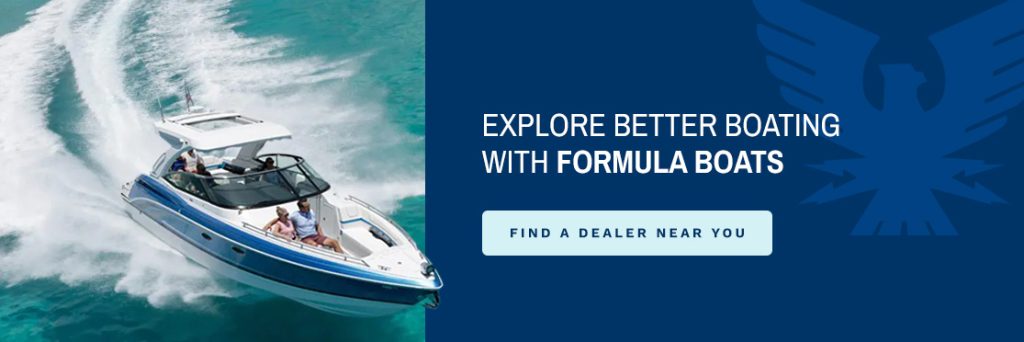
While everyone loves taking their boat out for a relaxing ride, the water can be dangerous. Capsizing is one potential hazard for you, your passengers and your boat. What should you do if your vessel tips over but stays afloat? Understanding how to handle this situation will help you stay safe during an emergency.
What Should You Do to Avoid Capsizing or Swamping?
The best way to stay safe on the water is to prevent your boat from capsizing or running aground in the first place. Taking the appropriate precautions will keep you from getting into dangerous situations. These tips will help you stay problem-free while boating.
Capsizing Prevention
Capsizing is a boater’s nightmare, but you can avoid it by taking precautions.
- Proper weight distribution: An even weight distribution on your boat is crucial for stability. Avoid overloading one side and be mindful of your cargo’s placement. Familiarize yourself with your vessel’s weight limits, and don’t exceed them.
- Monitoring weather conditions: Keep a close eye on the forecast before setting out on the water. Sudden storms, strong winds and rough waters can increase the risk of capsizing. Make informed decisions about when and where to go based on the weather.
- Knowing your boat’s limits: Various vessels have different stability characteristics. Get to know your boat and understand its specific limitations. Smaller boats are more prone to capsizing in rough waters, so exercise caution when conditions are less than ideal.
Swamping Mitigation
Swamping occurs when water accumulates in your boat, destabilizing it. These strategies prevent this problem.
- Freeboard management: Freeboard is the distance from the waterline to your boat’s top edge. Maintain adequate freeboard to prevent water from splashing over the sides. Avoid overloading the boat, as this can lower freeboard and increase the risk of swamping.
- Drainage systems: Ensure your boat has an effective drainage system. Bilge pumps can help remove excess water from the vessel, keeping it dry and stable.
- Cargo securement: Secure all cargo properly to prevent shifting, which can unbalance the boat. Use tie-downs and compartments to stow gear safely.
What Should You Do if Your Boat Capsizes?
If your boat tips over, don’t panic. Learning what to do when capsizing will allow you to act quickly and efficiently. Use these tips to reduce the risk.
Immediate Actions After Capsizing
Right after capsizing, take these steps.
- Stay calm: Keeping your cool is the first and most crucial step when your boat tips over. Distress might lead to poor decision-making and potentially worsen the situation. Take a deep breath and assess your surroundings.
- Check for life jackets: Immediately check that all your passengers have their life jackets correctly fastened and secured. Life jackets are vital for buoyancy and can save lives in an emergency.
- Look for passengers: Account for all passengers and ensure they’re safe. People might get separated in the chaos, so you must keep everyone together and unharmed.
Righting the Boat
If your boat can handle it and the conditions are safe, attempt to right it. Typically, you can do this by shifting weight and applying leverage to turn the boat upright. However, this might only be possible in some situations. Carefully climb onto the ship — if this is the way to right your particular craft — and use ropes and weight to pull it over so it ends in the right direction. Do not try to right the boat if it is too large or you feel unsafe attempting this.
Swim to your boat and stay close by or on top of the capsized craft if possible. Use your flotation devices to keep you from getting tired as you drift alongside the boat. You can string multiple flotation devices together to create a small raft. Additionally, if you right the boat, use handholds and gunwales to pull yourself up.
Calling for Help

Communication devices like VHF radios, cellphones or personal locator beacons are essential for calling for help in an emergency. Have these devices and know how to use them. You should also familiarize yourself with internationally recognized distress signals, including flares or flags. If you have a VHF radio, tune it to the emergency channel and make a distress call, providing your location and the nature of your emergency.
Dealing With a Capsized Boat That Remains Afloat
If you have a capsized boat on your hands, you need to know how to address the situation safely. Use these tips to help you.
Assess the Stability
Before taking any action, assess the stability of your capsized but afloat boat. This evaluation is crucial to determine if proceeding with recovery efforts is safe.
Check for any damage or visible leaks. Attempting to salvage the boat might be unsafe if you notice significant structural damage or multiple hull breaches. In such cases, focus on personal safety and call for assistance.
If there are no signs of severe damage, gently push down on one side of the boat to see if it rights itself. If it doesn’t respond by slowly returning to an upright position, it may be best to abandon the attempt and focus on getting additional assistance.
Bail out Water
If your capsized boat appears stable and free from significant damage, your next step is to remove the accumulated water. Here’s how to do it:
- Removing water from the boat’s interior is essential to restore buoyancy. Locate a bailer, bucket or container. If you don’t have one on board, you can use your hands to scoop out water.
- Start bailing out water at the lowest point of the boat and work your way up.
- Collaborate with passengers to expedite the process. The more hands working together, the quicker you can get rid of the water.
Secure the Boat
Once the boat is relatively water-free, take steps to secure and stabilize it, reducing the risk of further capsizing:
- Distribute weight evenly within the vessel to maintain balance. Ask passengers to stay low and in the center.
- Secure all loose items and gear to prevent them from shifting and tipping the boat.
- If the boat has a centerboard or keel, lock it in place.
- Consider deploying sea anchors to help stabilize the boat, particularly in rough waters.
Explore Better Boating With Formula Boats

You must understand precautions and stay alert to keep your passengers and boat safe in an emergency. Maintaining water safety requires the correct knowledge and a top-quality boat. Durable boats will withstand the pressures of water use while providing a safe, fun water experience.
At Formula Boats, we ensure you get exceptional watercraft for all your needs. Whether you’re interested in customizing a boating experience or have questions, Formula Boats has the watercraft for you. We strive to deliver boating excellence with dozens of luxurious options for every model. Find a dealer near you or contact us online today to choose the perfect model for your adventures.
